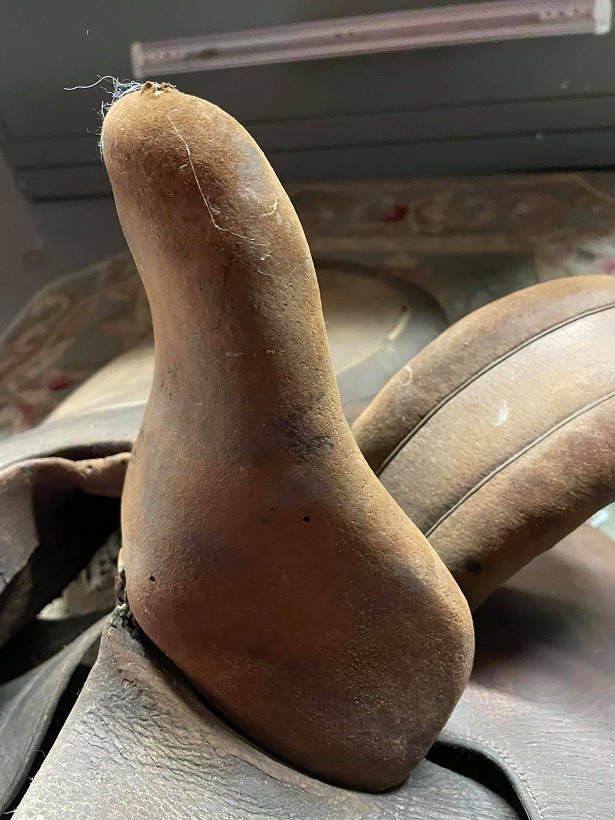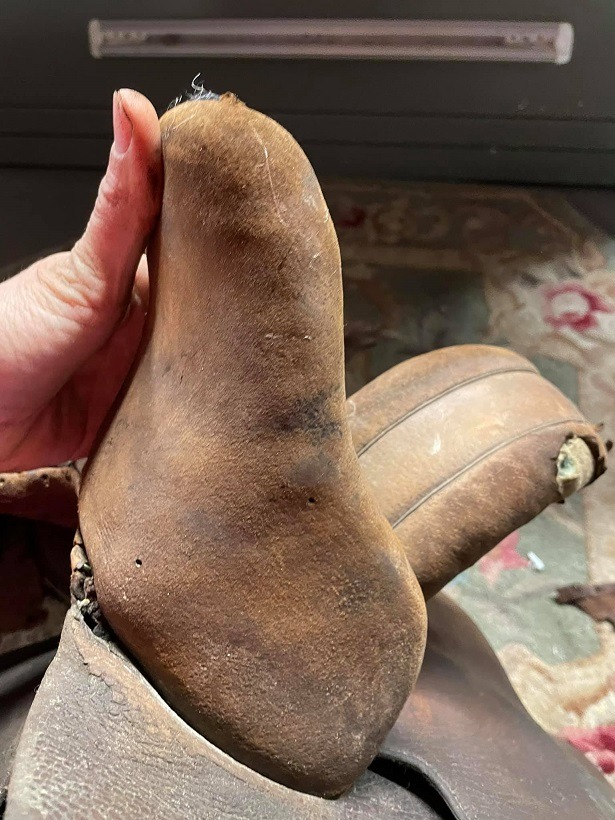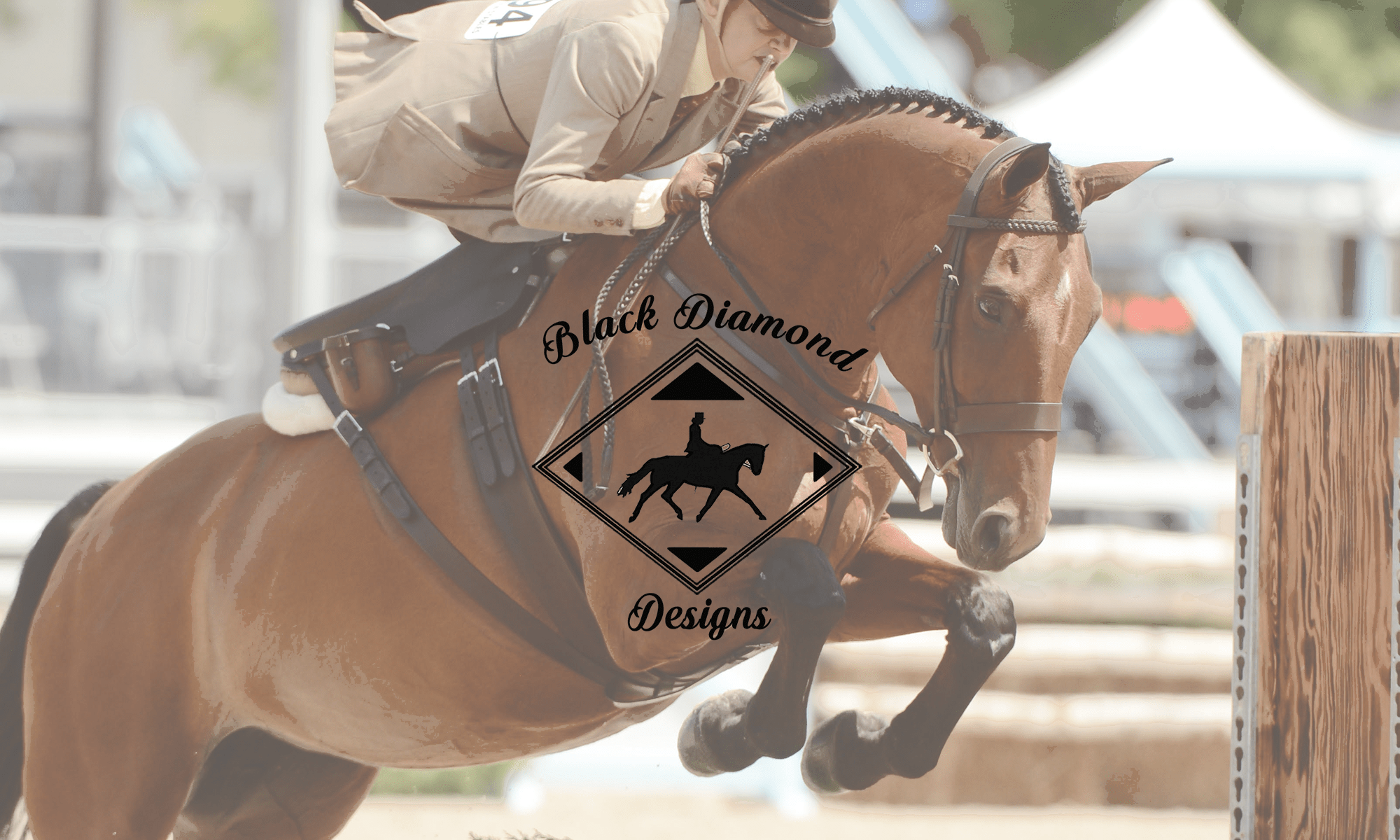This is the fixed head off of a 1908 Champion and Wilton sidesaddle. Sadly this saddle is beyond repair (yes there is such a thing) but I spent the money and bought the remains of it for the example of a blocked head.

Per Nick Creaton, the blocked head was developed in 1892 and improved upon in 1893 along with the split-flap design. I have only ever seen these heads on C&W saddles (with one exception), and Roger Philpot once told me if you see one you can be assured the saddle was from around the 1912 timeframe (1900-1920 when I asked for a reference). I don’t know why they weren’t seen much after that. It actually was a pretty neat concept but I imagine many didn’t find it appealing.
The one exception is a lovely 1923 saddle built by an independent saddler on a Hunter & Son tree. It was sold to me as a C&W but it wasn’t. But it was still a lovely saddle and is in use by a wonderful member of our sidesaddle community. I will admit recently reaching out to her asking her to contact me if it’s ever for sale again – I liked it that much!
Anyway, the blocked head offers a nice support to the right calf region to allow added stability, especially over a large fence. More surface area to press the leg against equals greater points of contact which should equate to greater stability. I did find this to be the case, but many others I have asked who have ridden in blocked head saddles didn’t notice a difference. A lovely feature that likely added hours of skilled labor to the production of the saddle itself. A beautiful example of craftsmanship in my opinion.


I know some saddles like the one above really can’t go back into circulation for use due to the damage to the tree and metalwork but I am slowly building an educational collection and would love to have examples of the various features to share at events like Camp Leaping Horn. If you have pictures or own an example I would love to hear from you – email me.

